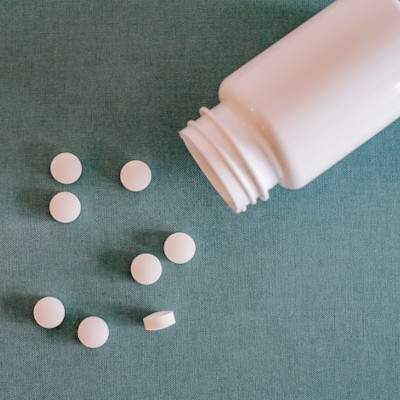
Benadryl Overdose And Addiction: What You Need To Know
Benadryl (also known by the generic name diphenhydramine) is best known as an over-the-counter antihistamine medication mainly used to treat allergies. It has also been popular in emergency rooms for treating a number of other conditions, such as migraines and urticaria (hives).
However, it has fallen out of favor in recent years due to several factors. These include its strongly sedating effects, its potential for negatively impacting cognition and psychomotor performance, and causing hallucinations or a sensation of being high – especially when administered through rapid intravenous administration.
Given its potential for misuse and adverse side effects, many people wonder if it is possible to overdose on Benadryl or become addicted to this medication.
In this article, we will discuss the following topics about Benadryl and the potential for addiction and overdose
Avoid The Negative Effects of Cocaine with Elite Home Detox
Begin Your Road to Recovery Right Now! Elite Home Detox – Your Path to a Healthier You allows you to detox safely at home.
Table of Contents:
What Is Benadryl?
In this section, we will go over Benadryl’s composition, medical uses, and over-the-counter availability.
Benadryl’s composition and active ingredient(s) vary by product. Some Benadryl products contain only one active ingredient, and others have two active ingredients.
- Benadryl Allergy Tablets have one active ingredient: the antihistamine diphenhydramine.
- Benadryl Allergy Plus Congestion Tablets contain diphenhydramine and the decongestant phenylephrine.
- Benadryl Itch Stopping Cream contains diphenhydramine and the skin protectant zinc.
- Benadryl Itch Cooling Gel does not contain diphenhydramine; it only contains the pain reliever camphor.
Benadryl has many medical uses. Some uses are approved by the Food and Drug Administration (FDA), while others are unofficial (off-label).
Benadryl is FDA-approved to help treat the following conditions:
- Common cold symptoms such as sneezing and runny nose
- Hay fever and other respiratory allergies
- Hives, itching, and skin rashes
- Sinus pain and congestion
- Bee stings and bug bites (topical)
- Swelling caused by hives (topical)
- Poison ivy (topical)
- Sunburn (topical)
Off-label uses include:
- Migraine headaches
- Motion sickness or nausea
- Occasional insomnia
In the United States, Benadryl is available over-the-counter. This means you do not need to get a prescription from your doctor to be able to buy Benadryl. Benadryl can easily be found in a drug store or grocery store.
Safe Usage Guidelines
Next, we will discuss the safe usage guidelines for Benadryl, including recommended dosages, precautions for special populations, and potential side effects.
Recommended Dosages
Precautions for Special Populations
Potential Side Effects
Benadryl Overdose
In this section, we will go over Benadryl overdose, including symptoms and warning signs, immediate actions to take, and seeking medical help.
Symptoms and warning signs of Benadryl overdose in adults and children include:
- Anxiety and nervousness
- Blurred vision
- Coma
- Confusion
- Death
- Decreased sweating
- Hallucinations
- Heart arrhythmia
- Involuntary movements
- Restlessness
- Seizures
- Trouble breathing
Some immediate actions exist if you know or suspect that you or someone else has overdosed on Benadryl. Call 911 first and then the Poison Control Center at 1-800-222-1222 for further instructions. You will be asked about the person’s age, weight, current health status, the time the medication was consumed, the amount consumed, and if the person took any other drugs along with Benadryl.
Because a Benadryl overdose can be fatal, you should seek immediate medical attention if you suspect a Benadryl overdose.
Factors Influencing Overdose Risk
Numerous factors influence overdose risk, including age and weight considerations, drug interactions, and misuse and abuse.
The effects of a Benadryl overdose can vary based on the person’s age and weight. A Benadryl overdose is more dangerous for children and older adults.
Benadryl can have interactions with other medications and supplements, including:
- Anticholinergic drugs
- Antidepressants such as Zoloft (sertraline)
- Antihistamines such as Zyrtec (cetirizine)
- Antipsychotics
- Benzodiazepines such as Xanax (alprazolam)
- Chamomile
- Kava
- Melatonin
- Opioids
- Sedative-hypnotic drugs
- Valerian
There are no known interactions between Benadryl, Motrin (ibuprofen), or Tylenol (acetaminophen).
You should not drink alcohol while taking Benadryl because it can increase the effects of alcohol, cause excessive sleepiness, and impair your abilities, such as your ability to drive.
There is a potential for abuse and misuse of Benadryl because taking high doses can cause hallucinations and a sensation of being high.
Understanding Addiction
Understanding addiction is vital to helping a loved one who is abusing Benadryl. There are multiple facets of understanding addiction, including differentiating dependence and addiction, how addiction develops, and psychological and physiological factors.
Differentiating Dependence and Addiction
How Addiction Develops
Psychological and Physiological Factors
Can You Overdose on Benadryl?
Next, we will get into the possibility of Benadryl overdose, including clarifying lethal doses, real-life overdose cases, and why it happens.
A fatal dose of Benadryl depends on factors such as the condition it is being used to treat and the person’s age. The lethal dose is estimated to be 20 to 40 mg per 1 kg for adults and 500 mg per 1 kg for children.
There are many real-life Benadryl overdose cases, including several American teenagers hospitalized or dying after doing the “Benadryl challenge” on the social media platform TikTok.
It is also important to know that children under the age of six years old are more sensitive to the effects of diphenhydramine and can overdose more easily on it than adults and older children can.
Benadryl overdose can happen when someone accidentally or intentionally takes too much of this medication. At high doses, this medication can attach to histamine receptors in the nervous system and cause sleepiness, decreased blood pressure, and a slower breathing rate. It can also cause damage to the heart.
Should You Worry About Developing Addiction?
This section will discuss if you should worry about developing a Benadryl addiction, including risk factors, signs of Benadryl addiction, and long-term consequences.
There are a number of risk factors for developing a Benadryl addiction, including:
- Taking Benadryl to treat anxiety and become relaxed
- Taking Benadryl to treat insomnia
- Taking Benadryl to treat muscle spasms and tremors caused by Parkinson’s disease
- Taking Benadryl to treat the side effects associated with antipsychotic medications
- Taking large amounts of Benadryl
There are a number of signs of Benadryl addiction, including:
- Anxiety and confusion if you skip a dose
- Being unable to cut down on Benadryl use
- Being unable to fall asleep before consuming Benadryl
- Body tolerance to Benadryl
- Dependence on Benadryl to function normally
- Depression
- Difficulty concentrating and focusing on simple tasks
- Experiencing withdrawal symptoms
- Feeling the need to take Benadryl to achieve the high
- Hallucinations
- Low blood pressure
- Mood swings
- Nightmares
- Overall body weakness
- Shivering
Benadryl addiction can cause long-term consequences, including:
- Deterioration of mental capacity
- Heart function issues
- Increased risk of dementia
- Kidney and liver problems
- Overdose
- Shaking and twitching
- Sight problems
- Withdrawal symptoms
Treatment and Recovery
Many treatment and recovery options exist, such as detoxification, rehabilitation programs, and supportive therapies.
Detoxification
Rehabilitation Programs
Supportive Therapies
Prevention Strategies
Prevention strategies such as responsible usage, education and awareness, and alternatives to Benadryl are important in avoiding addiction and dependence.
Responsible Usage
It is imperative to use Benadryl only as directed. If you find yourself taking Benadryl often or using it to treat conditions other than what it is meant to be used for, talk to your doctor to find out if other medications may work better for you.
Education and awareness of the risks associated with Benadryl can help people avoid misusing or overdosing. Share this article with family and friends to spread the word.
There are a number of alternatives to Benadryl that are divided into two categories: first-generation antihistamines and second-generation antihistamines. First-generation antihistamines are known to cause more sleepiness and other side effects than second-generation antihistamines do. Benadryl is a first-generation antihistamine.
In addition to Benadryl, other first-generation antihistamines include chlorpheniramine (Chlor-Trimeton), dimenhydrinate (Dramamine), and hydroxyzine (Vistaril).
You can take second-generation antihistamines instead of Benadryl, including cetirizine (Zyrtec), fexofenadine (Allegra), and loratadine (Claritin).
Last Words
Benadryl is a first-generation antihistamine medication that can help treat a number of medical conditions. It is available over the counter, which makes it easy to get; however, its availability also elevates the risk of misuse.
Taking Benadryl for certain issues, such as using it as a sleep aid, can also increase your risk of abuse and overdose. Young children and older adults are at the highest risk of adverse effects from taking Benadryl.
It is possible to become addicted to Benadryl, but there is hope for you or a loved one who may find themselves battling addiction. In-home, inpatient, and outpatient rehabilitation programs and counseling are available to help you or a loved one overcome addiction and make a full recovery.
Detox Safely at home With Elite Home Detox!
You will be given a care coordinator from Elite Home Detox to assist keep you on track to support your recovery. Once you and your professional team have designed a customized recovery plan, one of our team members will come to your home and stay with you as you detox quietly in the comfort of your own home.
After detox, we will work with you to develop a realistic and successful aftercare plan that includes continuing recovery support. We can also advise friends and family on how to best assist you as you take this next step. We’re here to assist you. Contact us today for a personalized consultation!


